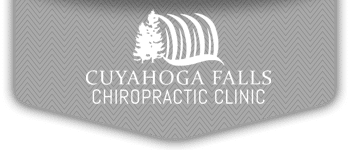The Benefits of Chiropractic With Electrical Muscle Stimulation

The Benefits of Chiropractic with Electrical Muscle Stimulation

Updated on November 20th, 2019 by Dr. Ryan Meehan
The road to recovery can sometimes be long and challenging. Patients are eager to start feeling better and get back to their regular lives and favorite activities. Chiropractors have the important job of guiding patients along this journey. In order to help patients reach their rehabilitation goals as soon as possible, they utilize a number of therapeutic methods. One of these methods is known as electrical muscle stimulation.
Let’s learn more about EMS, the advantages of this treatment, how it works, and the conditions it can be used to treat.
What is Electrical Muscle Stimulation?
EMS is a targeted rehab treatment which can be used in combination with manual therapy and other rehab activities and therapies. It supports the recovery process by stimulating specific muscles to prevent atrophy and build strength. Electrical muscle stimulation can be applied to help treat pain or recover muscle strength following an injury, surgery, or spasm.
How Does It Work?
When used to maintain or regain muscle strength, EMS works by delivering mild electrical pulses to the targeted muscle group. Chiropractors attach electrodes to the patient’s skin in order to stimulate muscle contraction. The electrical impulses imitate brain signals and the natural way that the body should respond.
To treat pain, electrical stimulation is delivered to targeted nerves. Chiropractors use electrodes to aim the electrical pulses at particular areas of the nervous system to block the transmission of pain signals being sent toward the spine and brain. The stimulation also works to boost the body’s production of endorphins which are natural pain relievers.
The Advantages of Electrical Muscle Stimulation
The benefits of EMS can impact a wide range of patients with many different conditions.
Physiotherapy
EMS can be used on physiotherapy patients to help reactivate muscle response while recovering from a surgery or injury. For example, electrical stimulation has been shown to effectively strengthen quadriceps after ACL reconstruction surgery. A physiotherapy program with targeted exercises can incorporate electrical muscle stimulation. EMS can enhance engagement in therapeutic activities and address weaknesses.
Rehabilitation
EMS has also been shown to be an effective way to increase mobility and strength for patients recovering from a serious injury. It can be used as part of a rehab and occupational therapy program. The stimulation helps retrain muscles to respond to the body’s natural signals and build strength by causing repeated contractions. This is beneficial when patients are working to relearn basic motor functions.
Long-Term Care
Patients who have suffered a spinal cord injury or paralysis are able to keep muscles active with this type of electrical stimulation. Additionally, therapists utilize electrical stimulation to help critically ill patients exercise and maintain muscle tone which would otherwise decrease because of lack of use.
Pain Management
Patients living with chronic pain can also benefit from electrical stimulation. This type of therapy utilizes a different wavelength which targets nerves in the body. By blocking the activity of pain receptors sending signals of discomfort to the brain, this drug-free therapy can provide relief.
Athletic Training
Some trainers utilize electrical muscle stimulation to help elite athletes to gain a competitive advantage. It has been applied to assist athletes, in a wide variety of sports, to improve strength, boost performance and increase muscle response.
Types of Electrical Muscle Stimulation
Rehab specialists and physiotherapists use different types of electrical muscle stimulation when working with patients.
Neuromuscular Electrical Stimulation
Neuromuscular electrical stimulation (NMES) is used in physiotherapy to speed up recovery after injury or surgical procedures. This form of EMS helps regain muscle response and strength. The goal is to return to regular function and normal activities in less time. NMES can also be used for muscle conditioning to enhance athletic and strength training programs.
Russian Stimulation
Similarly, this type of electrical stimulation works to improve muscle contraction and address weakness.
TENS
Transcutaneous electrical nerve stimulation (TENS) is a type of therapy that aims to alleviate acute and chronic pain. TENS interrupts the signals of pain that injured tissues send through the nerves in the body.
IFC
Interferential current (IFC) electrical stimulation is a form of stimulation intended to relieve pain and boost circulation to injured tissues in the body.
High Voltage Stimulation
EMS with high voltage can be implemented by chiropractors to support wound healing.
Iontophoresis
This type of electrical stimulation can also deliver medication through the skin. It is used to decrease inflammation, decrease swelling in a particular area, manage the development of scar tissue, and relax spasming muscles.
Conditions Treated with Electrical Muscle Stimulation
In the field of chiropractic and rehabilitation, electrical muscle stimulation can be used to treat the following conditions.
- Chronic back pain,
- Post-surgical pain,
- Joint pain,
- Arthritis,
- Fibromyalgia,
- Muscle injury from trauma, disease or surgery,
- Nerve inflammation,
- Tendonitis
- Bursitis,
- Stroke,
- Spinal cord injury,
- Muscle weakness or atrophy,
- Loss of motor skills,
- Dysphagia, or trouble swallowing.
What Patients Should Expect with Electrical Muscle Stimulation
You may be a little weary to undergo EMS as part of your physiotherapy regimen. We can assure you, however, that it sounds much more uncomfortable than it is. Therapy generally lasts 9-15 minutes. During this time, you will likely feel a tingling sensation and experience a repetitive tensing in the muscle during therapy. EMS should never be painful.
During your appointment, the chiropractor will place small electrodes on the skin. The sticky electrode pads are situated around the area which will be targeted with stimulation. Wires connect the pads to the EMS device which delivers the electrical current required.
Muscle Therapy
During this time, the therapist will control the intensity of the electrical current. Usually, this means beginning with a low level of stimulation and gradually increasing the setting. In response, the targeted muscles will contract with increasing force. Your therapist may ask you to make a particular motion as the pulses are being delivered.
Nerve Therapy
When EMS is used to relieve pain or muscle spasms, the patient is encouraged to relax during the therapy session.
When Electrical Muscle Stimulation Is Not Recommended
EMS is not advised for patients who have pacemakers, implanted heart devices, certain types of skin sensitivities and disease, and during pregnancy.
Get more information on how Chiropractic Care Can Help You Recover from an Injury.
Treating Patients in the Cuyahoga Falls Area
Learn more about the Physiotherapy & Rehab Services that we offer at the Cuyahoga Falls Chiropractic Clinic. Contact our office to set up a consultation.

